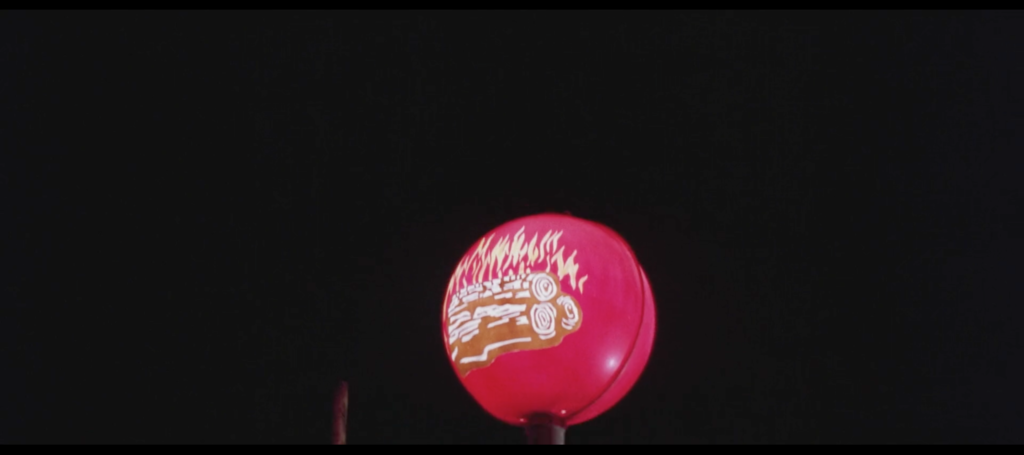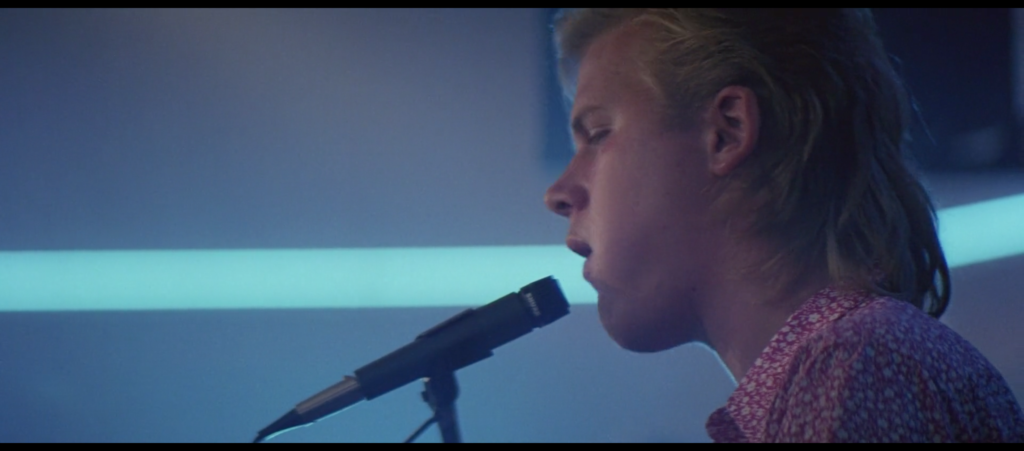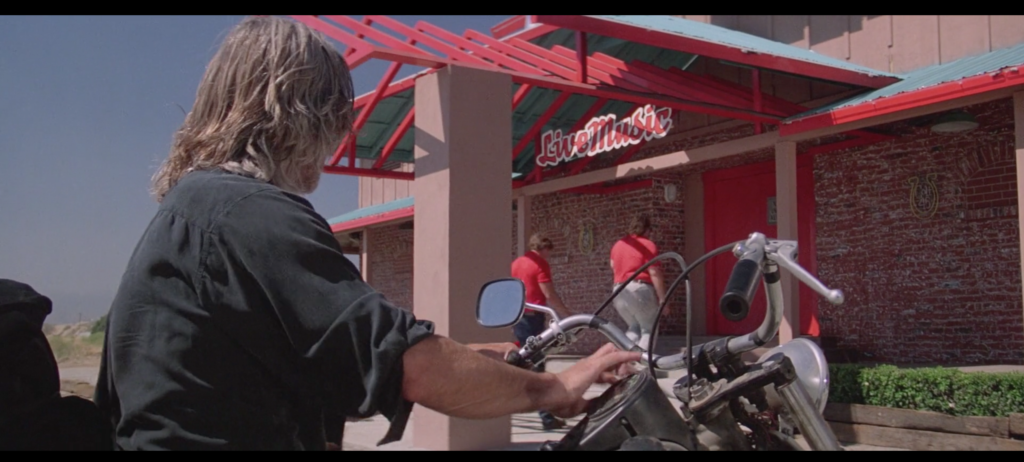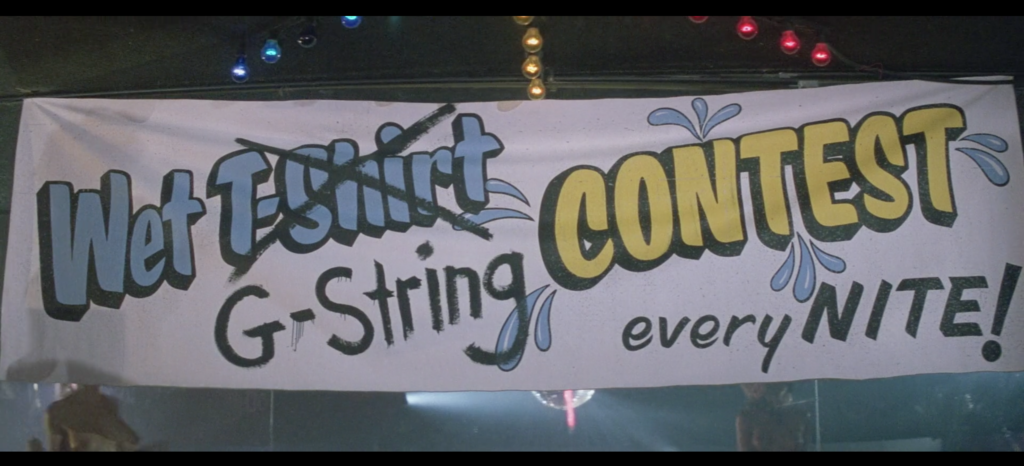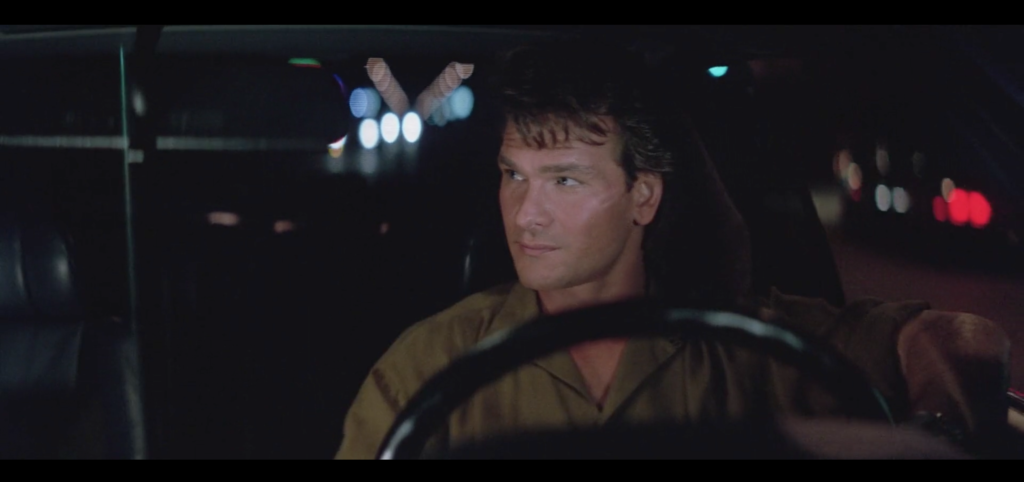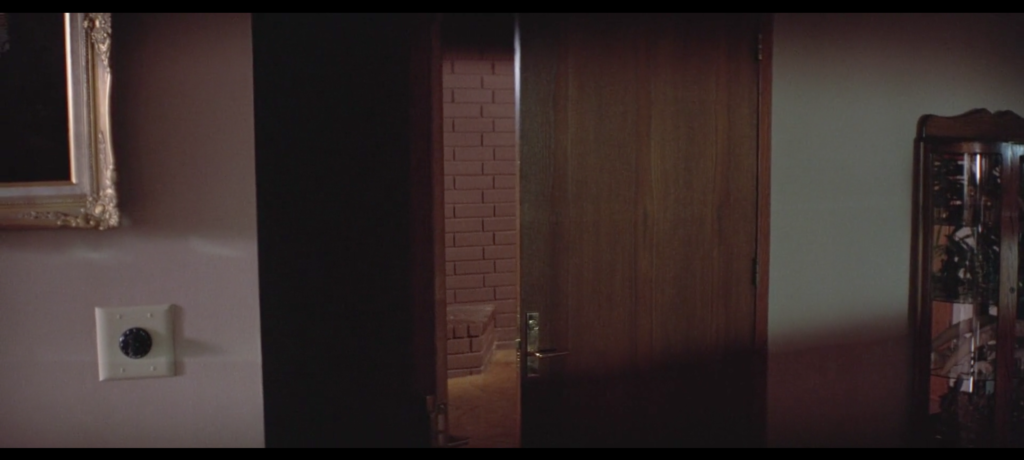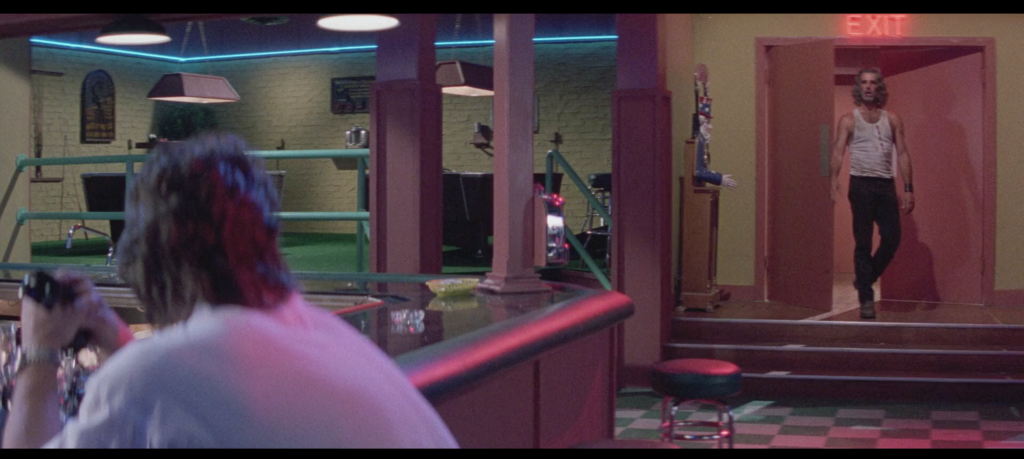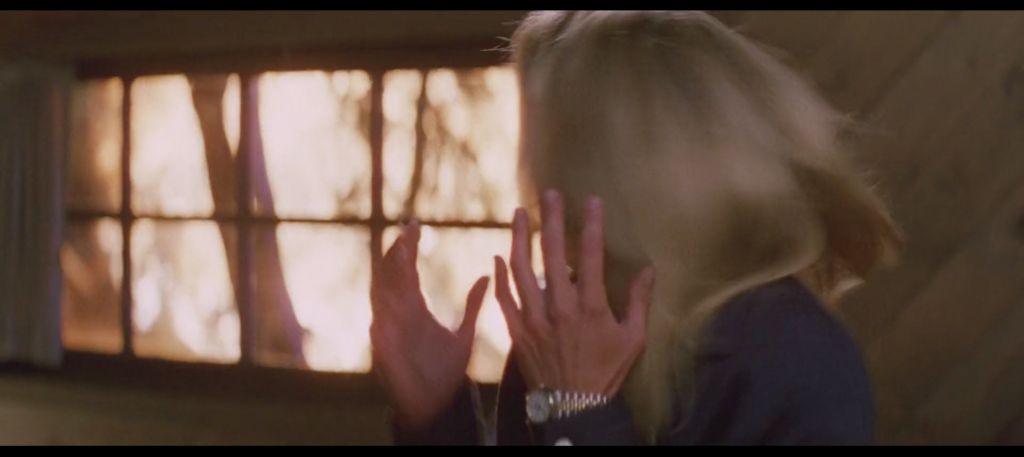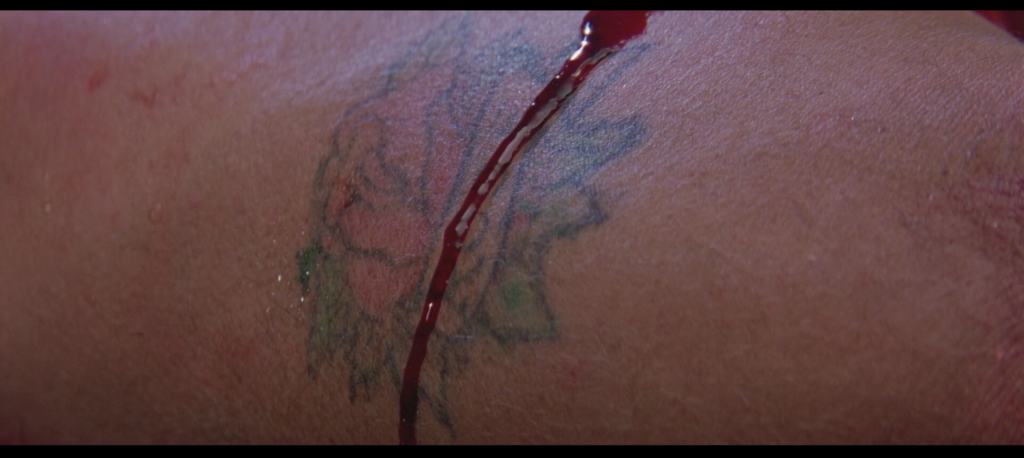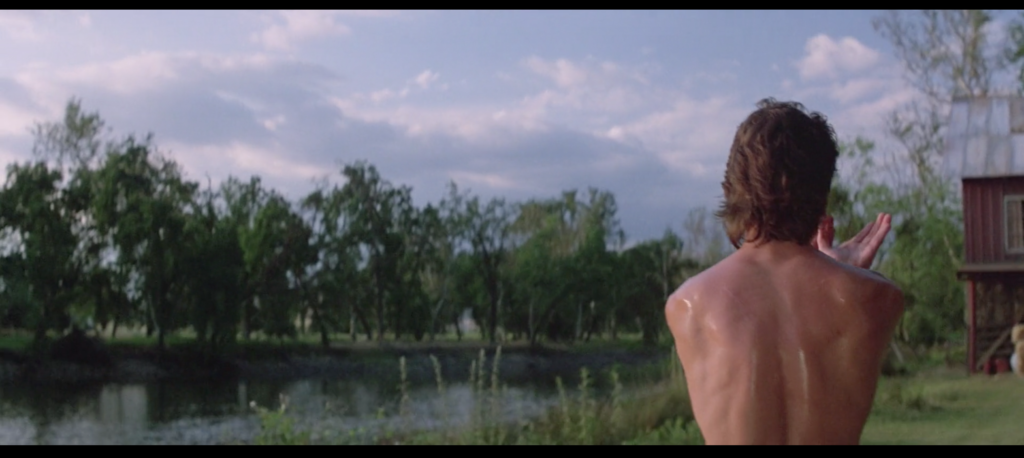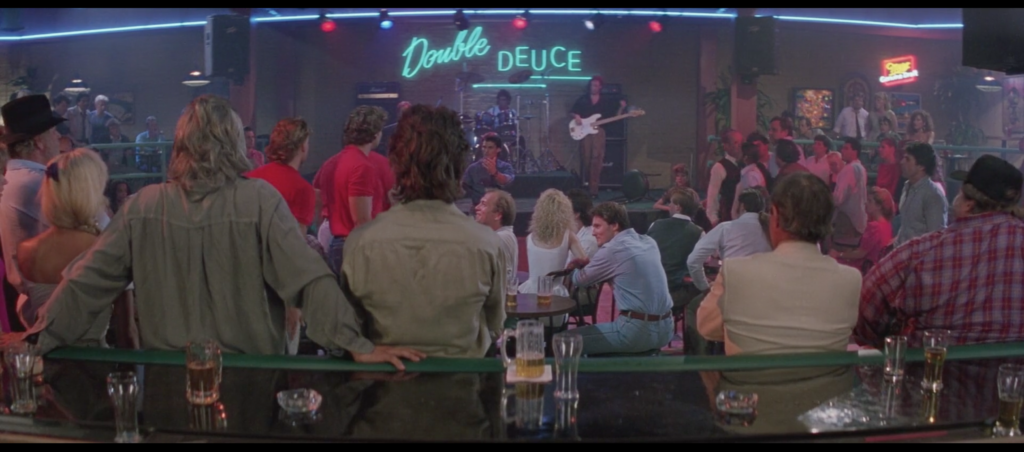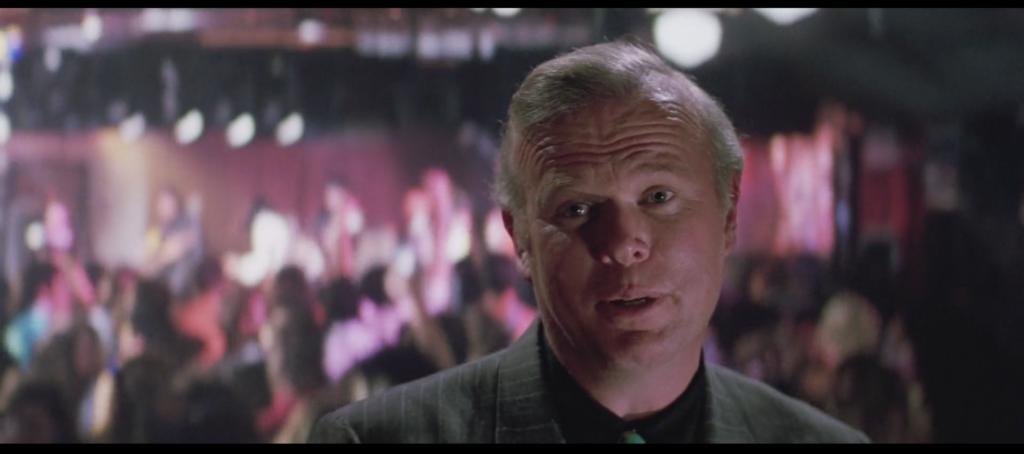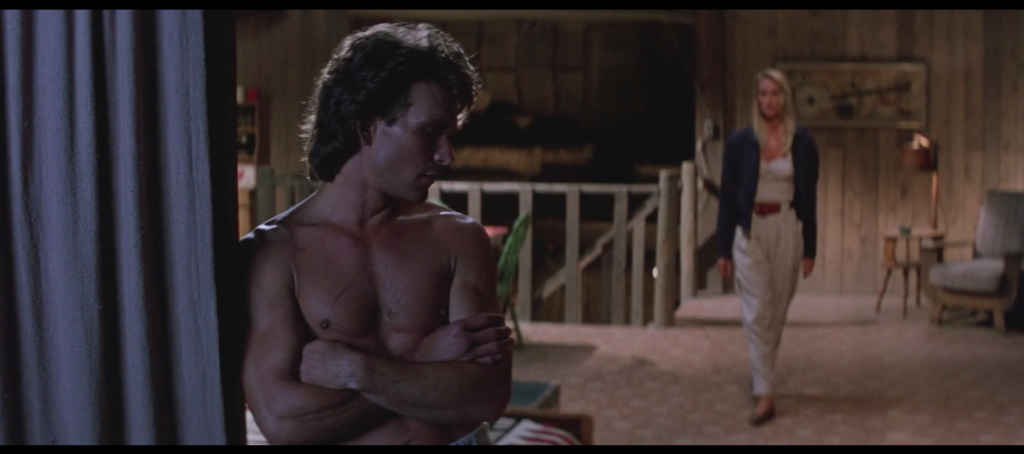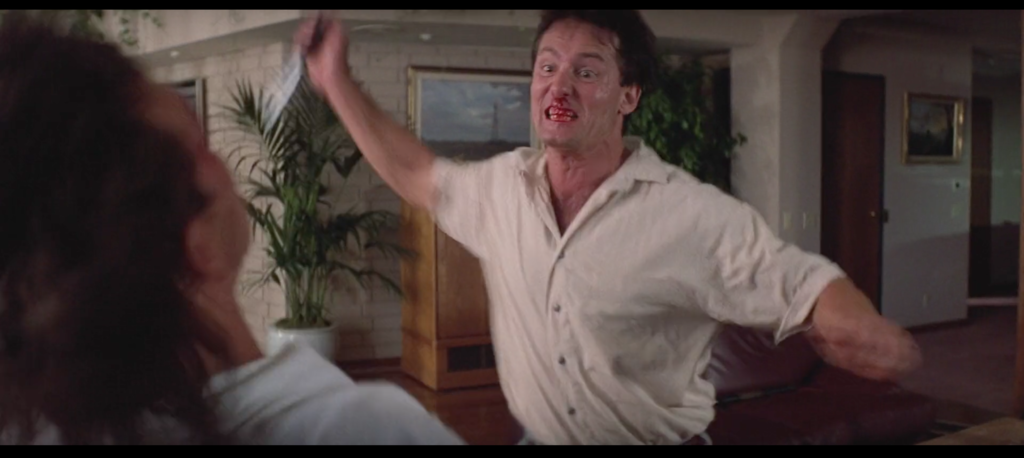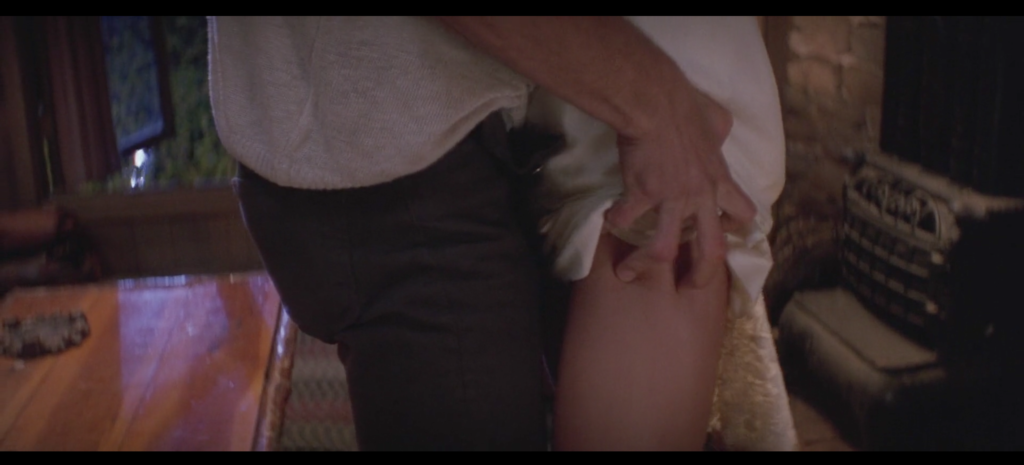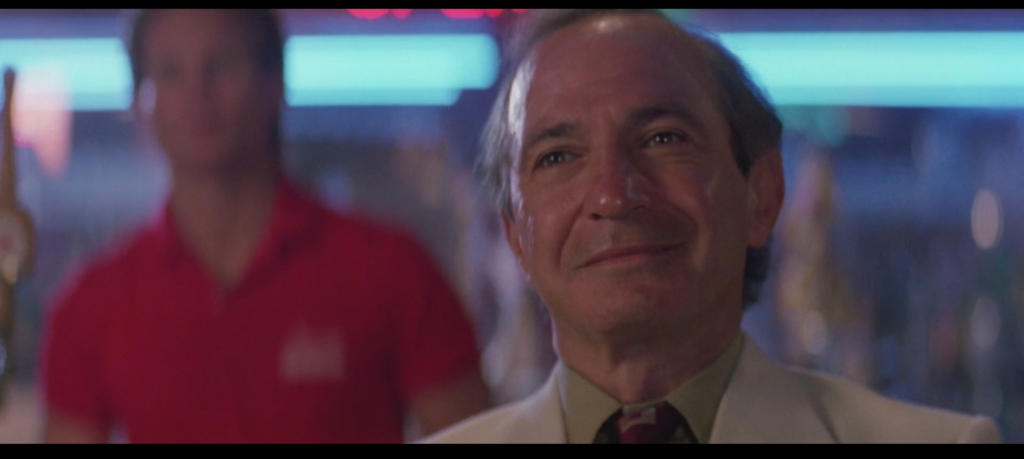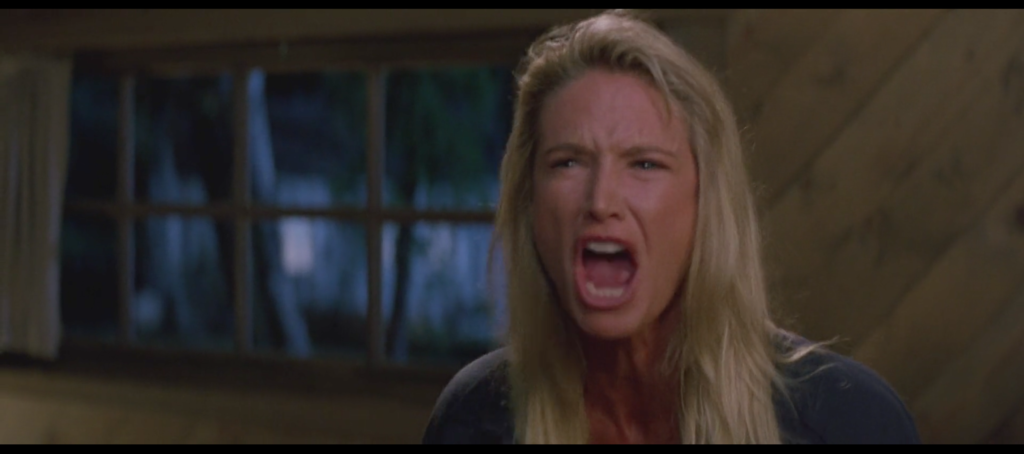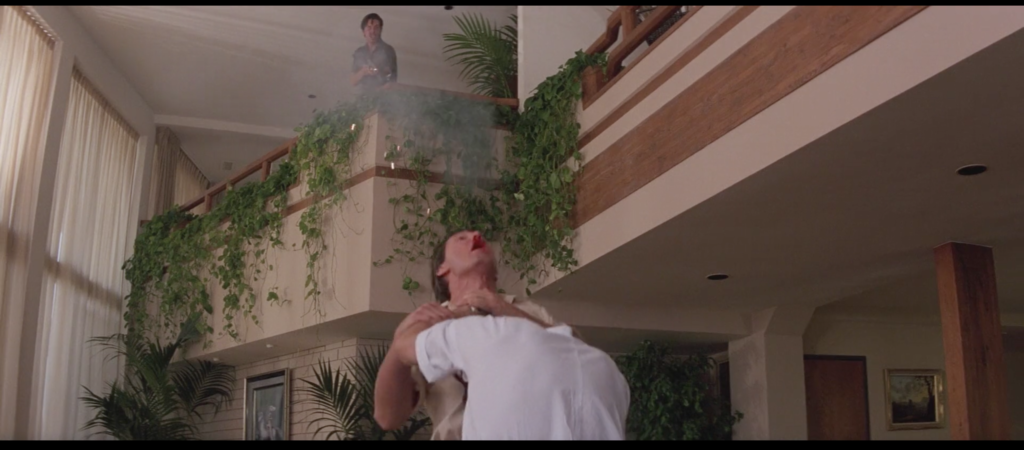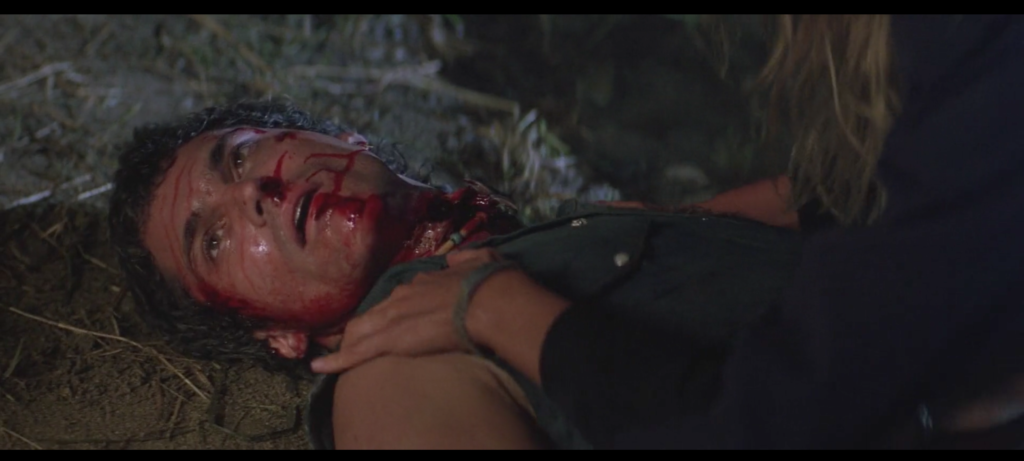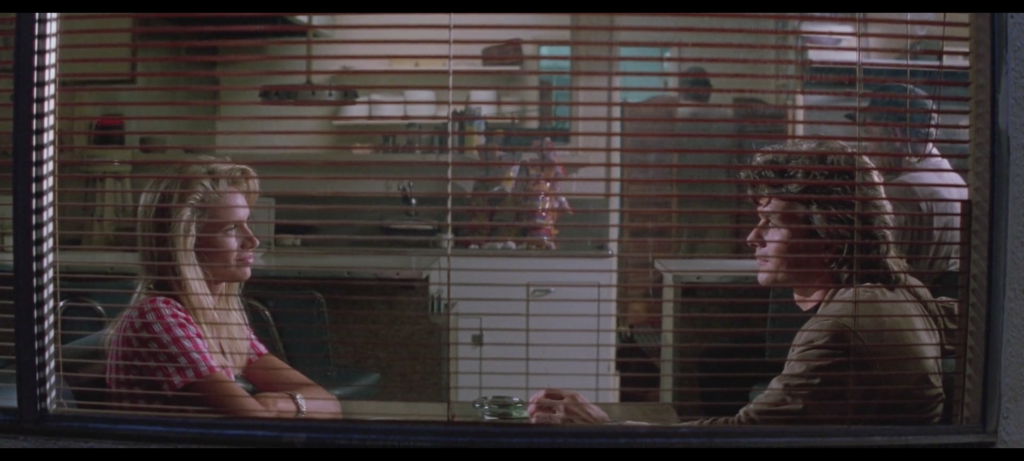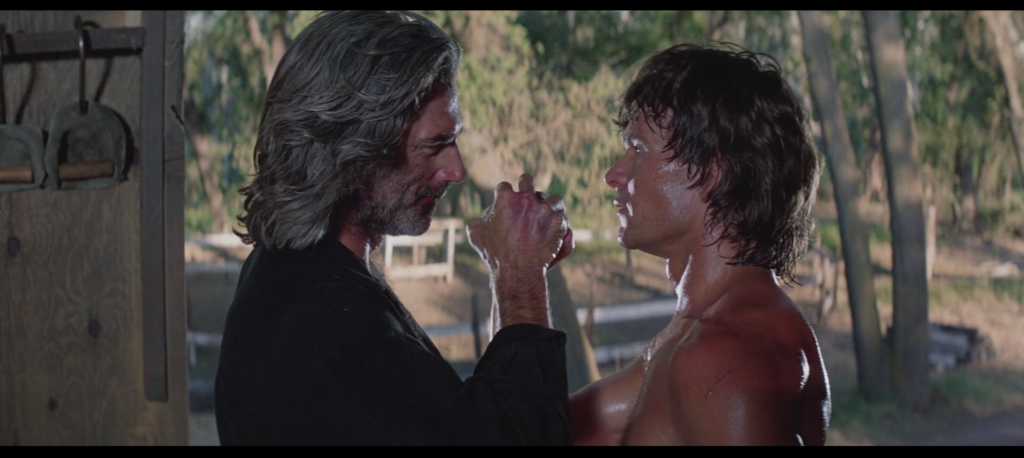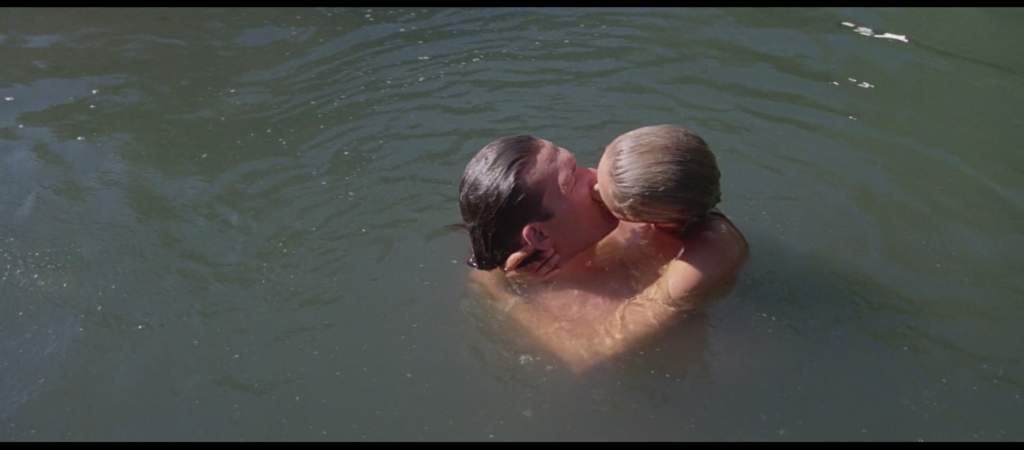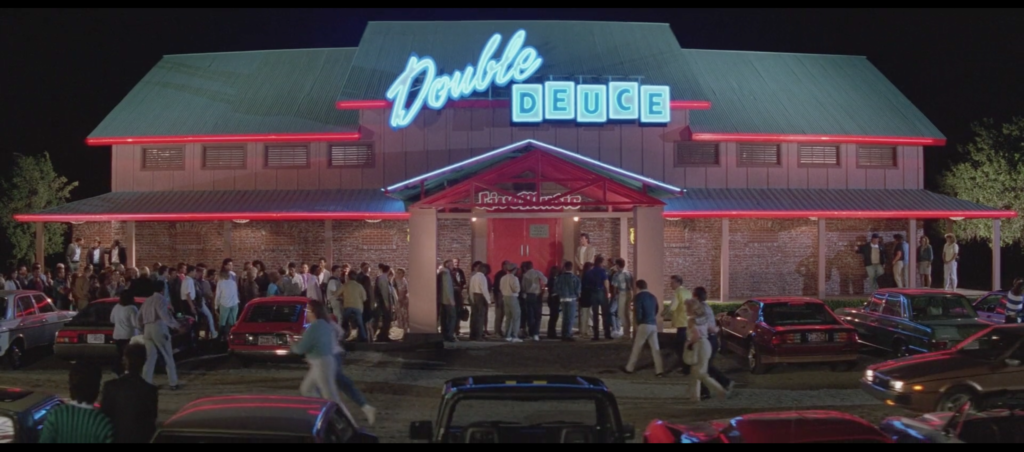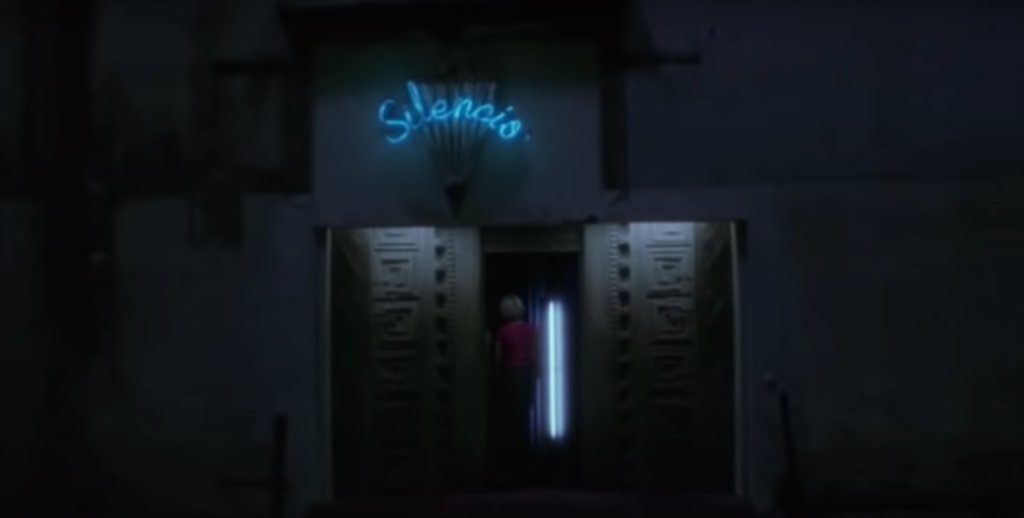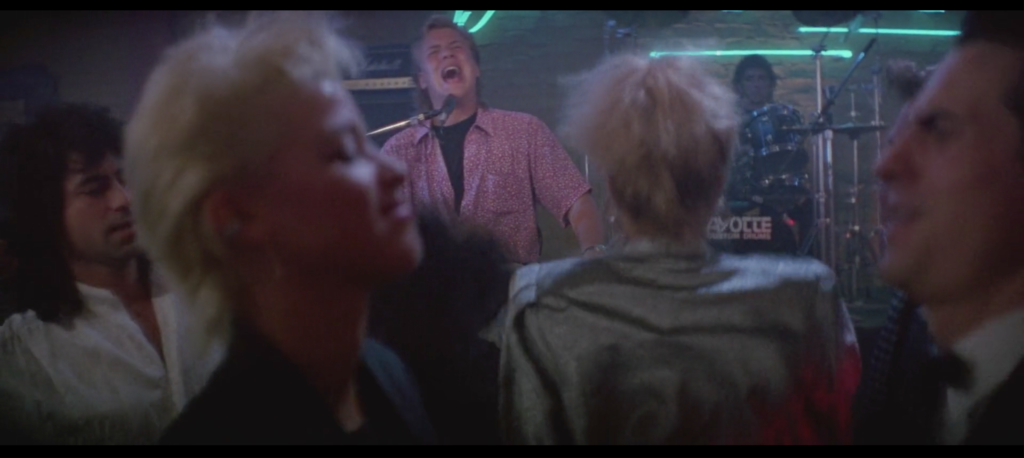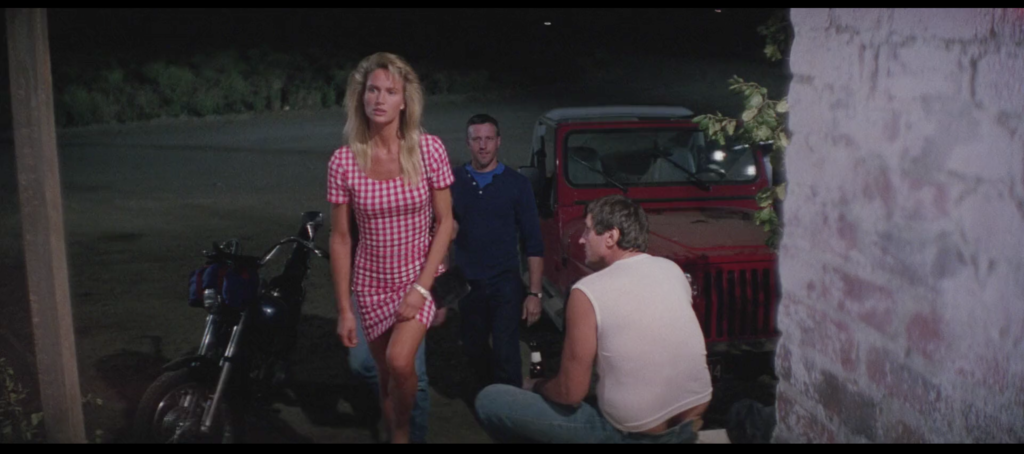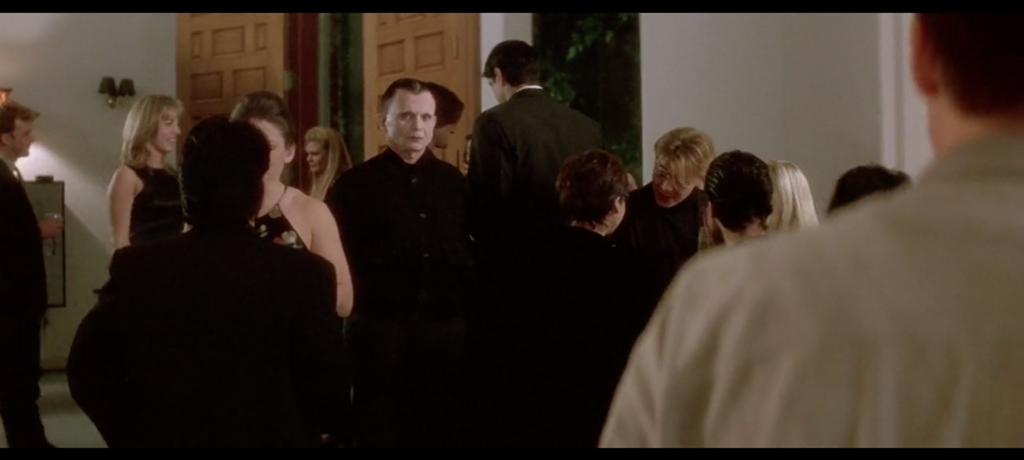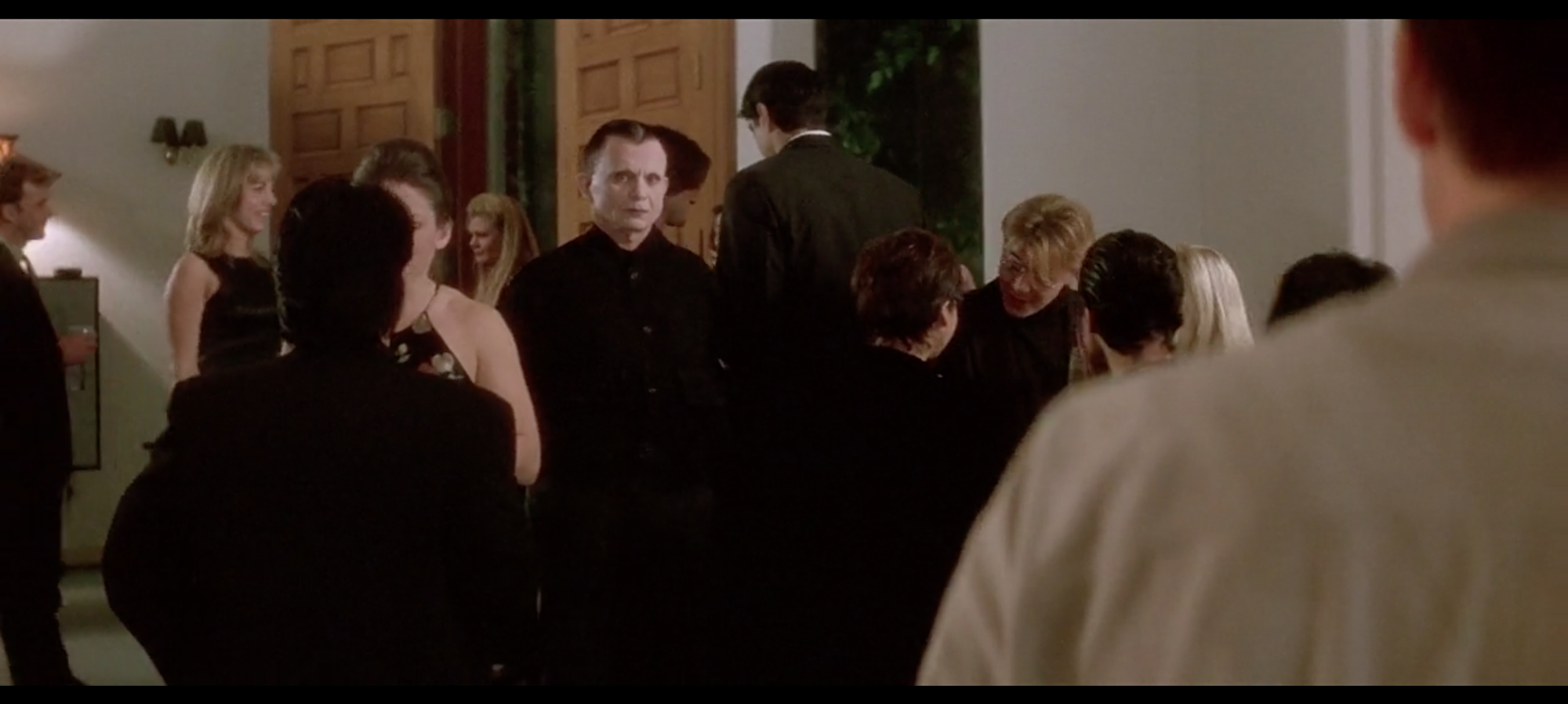Posts Tagged ‘david lynch’
‘Killers of the Flower Moon’ Is Martin Scorsese’s David Lynch Movie
October 30, 2023Scorsese and Lynch share in the recognition that there are tragedies that cannot be undone, that there are wounds that cannot be made whole, that some tears in the fabric of human decency are permanent. By facing the horror of violence head on, they raise the curtain, turn on the spotlight, and allow the preciousness of life to take center stage.
The Boiled Leather Audio Hour Episode 128!
March 22, 2021Stefan and I enter the town of Twin Peaks in this episode on David Lynch and Mark Frost’s landmark series. It’s geared to newcomers, so hopefully everyone can listen and enjoy!
178. Phantasmagoria
June 27, 2019“Cinema is a language. It can say things—big, abstract things. And I love that about it. I’m not always good with words. Some people are poets and have a beautiful way of saying things with words. But cinema is its own language. And with it you can say so many things, because you’ve got time and sequences. You’ve got dialogue. You’ve got music. You’ve got sound effects. You have so many tools. And you can express a feeling and a thought that can’t be conveyed any other way. It’s a magical medium. For me, it’s so beautiful to think about these pictures and sounds flowing together in time and in sequence, making something that can be done only through cinema. It’s not just words or music—it’s a whole range of elements coming together and making something that didn’t exist before. It’s telling stories. It’s devising a world, an experience, that people cannot have unless they see that film.” —from Catching the Big Fish by David Lynch
165. No hay banda
June 14, 2019Essays connect. That is the fundamental aspiration of my writing in the form. Analogy, applicability, juxtaposition, recontextualization, “yes, and…”: When I’ve succeeded as an essayist it’s in using these techniques to draw meaning from the spaces between elements according to the order into which, after plucking them from their preexisting positions, I have arranged them. Essays are cohesive statements, derived from montage.
Every Road House/Mulholland Drive post I’ve put together since the idea first came to me has taken at least as much effort as writing a post does, sometimes more. I say this because I don’t want you to think these are a shortcut or a cheat, though you may anyway, or a joke, which if you know me seems somewhat less likely than the shortcut/cheat possibility. But it’s semantics, really. Even when I’m joking around in here I’m serious.
It may seem, it may be, funny to compare one of the great films ever made to one of the great bad films ever made. But even if it is, my brain doesn’t know it. After the connection first occurred to me I haven’t been able to get it out of my mind. When this kind of fire starts, it is very hard to put out.
Both movies are about a beautiful person who is new in town, who discovers love and sex with a beautiful woman with a dangerous past, who unearths corruption and violence under the surface of their new home, who dazzles onlookers with their talent, whose performance in their chosen role are echoed by the performers at the blue-neon nightclub they visit, who are threatened with annihilation by their inability to align the person they purport to be with the person they are. They retell the same myth about self-discovery and self-actualization, the great myth of the West.
Mulholland Drive destroys that myth in the end. Road House does not. Yet Mulholland Drive also lives the myth for the bulk of its length before shattering it. Perhaps Road House is best understood, then, as the adventures Betty and Rita to the Diane and Camilla death dance of our own real lives. It is the eject button, the escape hatch, the panic room for which an overwhelmed mind can reach before it destroys itself. No hay banda! It’s all a tape. Il n’est pas de orquestra! It is an illusion. Listen…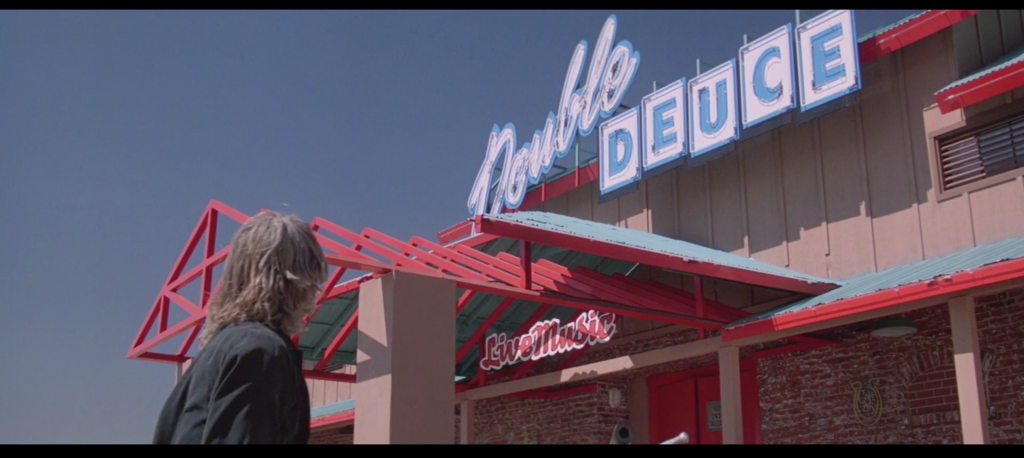
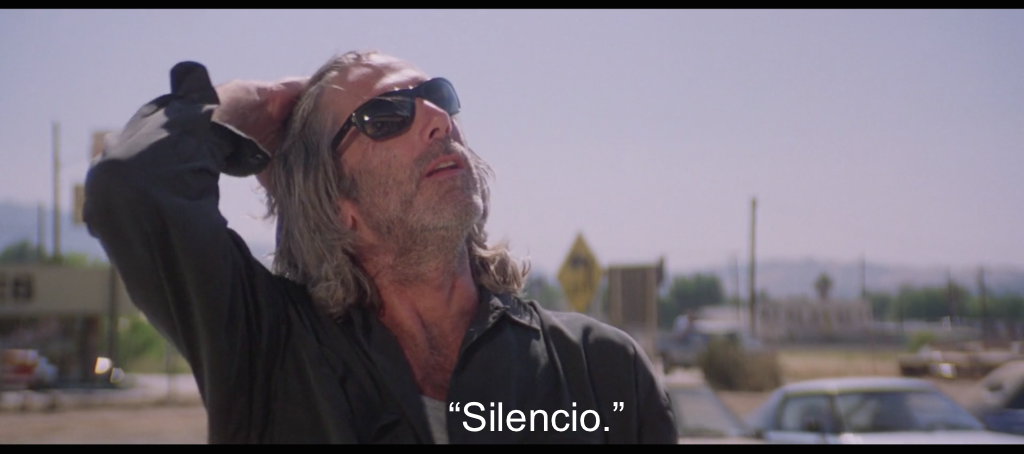
143. We’ve met before, haven’t we?
May 23, 2019Now, I’m not saying that Dr. Elizabeth Clay is the white-magic call to the shadow-self Dweller on the Threshold response, arriving at a raucous but fraught gathering to force a handsome man who favors loose beige jackets to face his innermost desires because he is afraid to do so himself while he charts a course for confrontation with a wealthy psychotic businessman in charge of a barely disguised criminal enterprise (played by an actor of Italian extraction born in New York City in 1930), but I’m not not saying it either.
“I’m There Right Now”: Inside David Lynch’s Scariest Scene
April 4, 2019When I love a horror film, I want to live in it. I mean this as a physical proposition. If a horror movie I adore has a great scene set in a memorable enclosed space, my instinct, no matter how awful the things that happen in that space are, is to walk right into it. I’d like to be in Leatherface’s bone room, in the Overlook Hotel’s elevator lobby, in the bare wooden attic where the Cenobites kill Frank Cotton, in Scarlett Johansson’s black liquid void. I want to feel the walls, tap the floor with my foot, smell the viscera. You know, make myself at home.
I’d eventually like to leave again, of course, which is usually what separates me from the people who do visit those places within the movies themselves. But there’s weird, cold comfort in those spaces. They’re inviting, to me anyway, and it is not my custom to go where I am not wanted.
From the Red Room in Twin Peaks to its blue counterpart Club Silencio in Mullholland Drive, David Lynch has created many of these spaces. As a director, Lynch is to ambient room tone what Martin Scorsese is to gangsters listening to “Gimme Shelter.” Evoking a sense of space, and what it’s like to be within four particular walls (curtains optional), is a major part of his project.
In one such space, he even threw a party.
I wrote about the Mystery Man scene from David Lynch’s Lost Highway for The Outline.
‘True Detective’ Season 3 Is ‘Twin Peaks’’ True Heir
March 10, 2019When that one-eyed man popped up at Amelia’s book reading in “Hunters in the Dark,” disruptive and distraught, perhaps complicit in the central crime in some tangential way but seemingly remorseful and also very obviously disturbed by his own experiences, I didn’t think of the Black Lodge or the Red Room, Norma Jennings and Dougie Jones. I thought of Russ Tamblyn’s Dr. Jacoby, the eccentric psychiatrist who had an unethical relationship with his teenage patient, snapped when she was murdered, and wound up a conspiracy crank in the woods.
There are so many people like that in Twin Peaks, people driven to the margins of the idyllic small-town society by abuse, poverty, mental illness, drugs, or their own bad actions, never to return. Harry Dean Stanton’s Carl Rodd, wise and sad in his trailer park. Alicia Witt’s Gersten Hawyard, a onetime child prodigy clinging to her suicidal and abusive junkie lover. Lenny Von Dohlen’s Harold Smith, the shut-in with the lonely soul. Catherine E. Coulson’s Log Lady, whose prophetic gifts couldn’t save her from dying of cancer like anyone else. Addicts, adulterers, crooked cops, scheming hoteliers, lonely gas station operators.
Some are closely connected, in one way or another, to murdered high-school student Laura Palmer — herself pulled in a million different soul-damaging directions long before her murder and quite apart from the demonic forces feeding off her misery. Others have no connection at all except geography. All of them float around in the dark and icy waters of the American underclass. In Twin Peaks, Laura’s tragic murder is the crack in the ice that allows us to observe the sea of suffering underneath.
That’s what I think of when I think of True Detective season three, not Matthew McConaughey’s twitchy nihilism, nor Colin Farrell’s thousand-yard, eight-beer stare. Wayne Hays, Amelia Hays, and Roland West may well be the truest detectives we’ve met yet. But from Agent Dale Cooper on down, not even the best investigators have ever truly seen an open-and-shut case, one they could comfortably solve and file away forever. The forces that made life so hard for the Purcells and the people around them, that empowered their community’s worst elements and discarded otherwise decent people like corpses at a crime scene, will be there even if Will and Julie’s attackers are taken down once and for all. Who killed Laura Palmer?was the start of a discussion about what we do in the face of endemic pain and injustice, not the end of it. If True Detective season three wraps up with the same strengths it has displayed so far, it will ask a similar question, and offer just as challenging an answer.
The only good online fandom left is ‘Dune’
July 11, 2018In the contemporary internet sense, the Dune discourse is wild and wide open, without the warring-camp, protect it at all costs mentality that plagues so many other geek-culture staples. If you say “The spice must flow,” you aren’t risking hours of replies from angry pedants the way you might if, oh I don’t know, you point out that in Justice League, Aquaman’s trident (from the Latin for “three teeth”) has five points instead of three. Unless you try very hard, you’re also unlikely to encounter anyone complaining that Dune has been ruined by SJWs and soyboys, or that critics who like it have been bought off by that sweet De Laurentiis money. Yet it’s still a sprawling invented world that provides you with all the esoterica and trivia and map-reading and jargon-slinging joy of any other. You can get stoned and stay up until the wee hours making dank Duncan Idaho memes with your friends, or with no one at all, completely unmolested.
And perhaps I’m going out on a limb here, but based on the source material and the filmmakers historically associated with adapting it — including Villeneuve, whose Blade Runner movie gives us a solid recent point of comparison — Dune-iverse phrases like “Tleilaxu ghola” or “prana-bindu training” or “He is the Kwisatz-Haderach” are never gonna reach “Infinity Stones” or “Ten points for Gryffindor” or “A Lannister always pays his debts” levels. Anyone who’s seen the very real Dune coloring and activity books, which look like an elaborate prank, can attest to how tough it is to boil this stuff down to four-quadrant consumability. It’s true that the books are bestsellers, but so is the comparable work of Jeff VanderMeer, author of Annihilation, which became a well-regarded science-fiction film that nevertheless won’t be getting Happy Meal tie-ins anytime soon.
No matter how much Lynch’s version trends upward in critical estimation, no matter how (or if) Villeneuve’s new version pans out, this is just not a franchise that’s scalable in the Transformers or Harry Potter way. It’s too dense, too weird. It smells like sun-bleached library paperbacks. Which, by the way, are the only form in which Dune has been successfully franchised, in the form of sequels co-authored by workmanlike SFF writer Kevin J. Anderson and Herbert’s son Brian. Dune references signal shared knowledge to those in the know, and that’s about it. Dune fandom is an un-fandom.
More than anything else, this is what makes immersion in Dune such an attractive prospect. Paul Atreides found anonymity, friendship, and freedom in the secret ways of the unconquerable Fremen desert tribes (Fremen, “free men,” get it?); his life after that point was a prolonged struggle to export that sense of freedom to others. Consciously or not, Herbert himself summed up the promise of Paul’s life in his introduction to New World or No World, repackaging it as a plan for the survival of the species and the planet we live on.
“The thing we must do intensely is be human together,” he wrote. “People are more important than things. We must get together. The best thing humans can have going for them is each other. We have each other. We must reject everything which humiliates us. Humans are not objects of consumption. We must develop an absolute priority of humans a head of profit — any humans ahead of any profit. Then we will survive. Together.” Dune is one small, goofy, vital way of sharing something wonderful with each other, and with nothing and no one else.
For my debut at The Outline I wrote about Dune, the nerdiest popular thing you can enjoy without feeling like a corporate shill or a footsoldier in some weird fandom war. I went real long and real deep, so please take a look!
The 10 Best Musical TV Moments of 2017
December 20, 20172. The Young Pope: “Sexy and I Know It” by LMFAO
“Sexy and I Know It” is Paolo Sorrentino’s ambitious, emotional, confrontational series about an autocratic American-born pope in miniature. Granted, using LMFAO to represent your drama about faith, loneliness, power, corruption, and lies is a bit counterintuitive compared to, say, summing up Twin Peaks with a song from the Twin Peaks score. That’s the joke, in part: It’s very stupid, and therefore very funny, to watch the Holy Father dress up for his first address to the College of the Cardinals while Redfoo drawls about wearing a Speedo at the beach so he can work on his ass tan. Girl, look at that body … of Christ?!
But like so much of The Young Pope, there’s a much deeper and more serious meaning beneath the craziness and camp. To wit, the brand of tyrannical, uncompromising religion the pontiff formerly known as Lenny Belardo (Jude Law) embraces depends on craziness and camp. Look at the obscene decadence of his subsequent entrance to the Sistine Chapel, borne on a litter like an emperor of old. Listen to his megalomaniacal speech, demanding that the Church remake itself in his bizarre and imperious image. Watch how he demands his followers demonstrate their obedience by literally kissing his feet. It’s a contrast to the self-aware silliness of “Sexy and I Know It,” yes, but it’s a contrast achieved by taking that song’s boasts as deadly serious claims to superiority. He’s got passion in his pants and he ain’t afraid to show it. Spiritually speaking, anyway.
I wrote about the 10 best music cues on TV this year for Vulture. As is always the case with lists of this nature when I write them, it is objectively right and I shall brook no dissent.
A spoilery complaint about Twin Peaks discourse
November 9, 2017this concerns the final episode. after the jump
“Rolling Stone had some great ones”
November 9, 2017Did I not mention that Kyle MacLachlan read and enjoyed my weekly Twin Peaks reviews for Rolling Stone?
Harry Dean Stanton: 10 Essential Movies
September 18, 2017Twin Peaks: Fire Walk With Me (1992)
“I’ve already gone places. I just wanna stay where I am.” Stanton’s role as tired-looking trailer-park owner Carl Rodd in David Lynch’s Twin Peaks prequel was as cryptic as everything else in the film, lasting just a few short minutes and some spare lines of dialogue. But he packs decades of world-weariness into his brief screen time; nobody could turn “It’s just more shit I gotta do now” into a punchline that doubled as a declaration of existential despair. Stanton reprised and expanded the role in Peaks’ astonishing third season this year, cracking jokes about defying death one minute, bearing witness to unspeakable tragedy like an earthbound angel the next – a moving, bonus grace note in a long, legendary career. STC
Why ‘Twin Peaks: The Return’ Was the Most Groundbreaking TV Series Ever
September 4, 2017A side note here: It feels goofy to praise David Lynch for not participating in the usual back-and-forth between showrunner and viewer about the need for answers, closure and a finale that “sticks the landing,” which the conclusions of The Sopranos and Lost have rendered a seemingly permanent part of the TV discourse. (It’s like giving Stanley Kubrick a shoutout for resisting the temptation to create the Kubrick Cinematic Universe.) Still, even if this wasn’t on the filmmaker’s mind, as seems likely, it certainly was on ours. How refreshing to watch a show wholly alien to the debates that consumed the final seasons of even the most truly wonderful dramas, from Mad Men to The Leftovers. And how cool to see a series so gloriously unsuited to the era TV takes, too. After “This is the water and this is the well,” didn’t every article you came across with a title like “Lucy Brennan Proves David Lynch Has a Receptionist Problem” or “Dr. Jacoby’s Spray-Painted Shit Shovels Would Work Much Better Using the Netflix Release Model” feel … a little small? Like, even smaller than usual?
[…]
Twin Peaks: The Return was a dazzling work of filmmaking. But unlike its jittering cameras, flashing lights, billowing smoke and ambient whooshing and whirring, its emotional foundations were rock solid. We may marvel at the cosmos Lynch and Frost created – a universe of vast purple oceans, towering metal fortresses, billowing red curtains and infinite fields of stars. We may spend another 25 years attempting to puzzle out Audrey’s location, the glass box’s bankroller, the true identity of “Judy” and what, exactly, became of the girl with the bug in her mouth. But there’s nothing ethereal or mysterious about abuse, trauma and the irresistible death-march of time. That part of Twin Peaks, the part that counts most, is as clear as your reflection in the mirror.
Twin Peaks is the best television show ever made. I tried to explain why for Rolling Stone.
“Twin Peaks” thoughts, Season Three, Episodes Seventeen and Eighteen
September 4, 2017So ends the con job that Lynch and Frost telegraphed from the season’s subtitle, The Return, on down. After all, the original Twin Peaks ended in the worst possible way: goodness corrupted, evil triumphant. Fire Walk With Me hinted at a way forward, only to linger on cruelty and suffering. Certainly nothing in Lynch’s intervening filmography indicated that this story would have a happy ending. Why wouldn’t we wind up right back where we started: an unspeakable violation, carving a hole in the moral fabric of the universe that no one, not even the whitest of knights, is capable of making whole?
This is Twin Peaks: The Return, alright. A return to pain that can’t be healed, crimes that can’t be solved, wrongs that can’t be righted. We drank full. We descended. There’s no way up and out again.
I reviewed the final episode of Twin Peaks Season Three for Rolling Stone.
“Twin Peaks” thoughts, Season Three, Episode Sixteen
August 28, 2017With only one week and two hours remaining, this season/series revival had spent nearly its entire running time chronicling the (mis)adventures of a Coop far from the one we knew and loved all those years ago – and that’s not even counting the evil doppelganger who escaped the Black Lodge into our world. Our beloved federal agent may have finally escaped that zig-zagged hellscape, but he wound up trapped in the life of a Las Vegas insurance agent named Dougie Jones. Episode after episode, “Dougie” was unable to remember not just his past but, like, how to speak in complete sentences. Somehow, this didn’t prevent our hapless hero from surviving multiple assassination attempts, winning both the local mob bosses’ favor and thousands of dollars at the slots (“Hell-oooooooo!”), making sweet love to Naomi Watts and consuming his fair share of damn good coffee and cherry pie. It was as if his innate Coop-ness was still shining through, guiding him through life’s dangers even if he was incapable of figuring out how a door works.
Then, last week, something changed. Hearing the name of his old mentor Gordon Cole in the movie Sunset Boulevard, “Dougie” was somehow triggered into jabbing a fork into an electrical outlet, sending him into a coma. What emerges on the other side in this episode is wonderful even beyond the imagining of people who’ve waited for this moment for two decades and counting.
“You are awake,” says the one-armed man Philip Gerard in a vision.
“One-hundred percent,” says Dale – the real Dale – in response.
Welcome back, Cooper — the do-gooder, go-getter and wrong-righter whose decency shone like a beacon through all of the darkness all those years ago. The music that accompanies his awakening is the Twin Peaks theme itself. He even still loves and cares for Janey-E and Sonny Jim, the family you might have expected him to simply abandon. By the time his insurance-agency boss Battlin’ Bud Bushnell warns him the FBI is looking for him and he turns to the camera and says, “I am the FBI,” it’s hard to believe there was a single Peaks freak on the planet who wasn’t either screaming for joy or a blubbering mess.
I can count on one hand the number of times I’ve been as moved by an episode of television I was by last night’s Twin Peaks. Just openly sobbing with joy. I reviewed it for Rolling Stone.
“Twin Peaks” thoughts, Season Three, Episode Fifteen
August 21, 2017SPOILER ALERT
But the beating, breaking heart of the episode is undoubtedly the death of Margaret Lanterman, the prophetic Log Lady. During one of her regular phone calls to Deputy Hawk, she tells him, repeatedly, “I’m dying.” She seems to have as positive an outlook on it as possible, saying death is “just a change, not an end.” But this is all coming from the mouth of actor Catherine E. Coulson, who was herself actually dying when the scene was shot. “Hawk, my log is turning gold,” she says, her voice wavering. “The wind is moaning. I’m dying. Goodnight, Hawk.” “Goodnight, Margaret,” he says as they hang up. Then, after she’s gone, he mournfully repeats the phrase: “Goodbye, Margaret.” If you could make it past that point without bawling, you’re made of stronger stuff than most of us.
The Log Lady, Big Ed and Norma, Audrey, Steven and Gersten, the screaming woman at the Roadhouse: They’re all connected not just by geography, but by states of spiritual extremis. They experience enormous, nearly crippling feelings – all of which leave them questioning their place in life. Lynch and Frost still bring the bizarre in this hour. But they also carefully, respectfully depict deep, vulnerable emotional states and trust us to take them seriously. That makes all the difference.
Dean Hurley – Anthology Resource Vol. 1 △△
August 19, 2017You don’t have to pay attention to Anthology Resource Vol. 1 △△. In fact, I’d go so far as to make that an order: Do notpay attention to Anthology Resource. This album of ambient music and soundscapes from the astonishing third season of “Twin Peaks,” by the show’s music and sound supervisor Dean Hurley, will frustrate focused attempts at listening. Passages feel overlong and repetitive, despite 11 of the collection’s 18 compositions clocking in at two minutes or less. Moments of beauty and terror burst out of the murk, only to dissipate with aggravating speed. Hurley’s airy electronic tones conjure up a sense of space so distinct you can practically see it, as titles like “Weighted Room / Choral Swarm,” “Tube Wind Dream,” “Interior Home by the Sea,” and “Forest / Interior” make clear. Yet the effect of sitting and listening intently to song after song is like looking through a window at these strange new worlds, only for someone to abruptly close the blinds on you over and over.
Here’s the thing, though: So what?
I reviewed the first of this season’s Twin Peaks soundtrack/score albums, Dean Hurley’s Anthology Resource Vol. 1 △△, for Pitchfork. It’s a roundabout way for me to talk about Transcendental Meditation, too.
“Twin Peaks” thoughts, Season Three, Episode Thirteen
August 8, 2017What’s worse: Crushing a person’s skull or crushing their spirit? The back-from-the-dead Twin Peaks has seen its fair share of the former violation, courtesy of the supernaturally strong denizens of the Black Lodge. When those demonic entities are around – whether they’re Woodsmen assaulting radio-station employees or Dale Cooper‘s evil doppelganger shattering a rival criminal’s face with a single punch after an arm-wrestling bout – no cranium is safe. And then there’s the long, wordless scene starring Big Ed Hurley (Everett McGill, making his revival debut), which features no monsters and no murders – but as the credits roll over his sad and lonesome face, didn’t your brain feel under assault?
It’s not as if co-creator/director David Lynch is new to depicting the trials of growing up and getting old. You don’t need to look any farther afield than Twin Peaks‘ own Carl Rodd, played by Harry Dean Stanton, for a portrait of the weariness and wisdom that comes with that territory. (Stanton’s wordless appearance in the filmmaker’s 1999 movie The Straight Story is quietly devastating for the same reason.) Moreover, the visible effects of aging on actors such as Dana Ashbrook (Bobby Briggs), James Marshall (James Hurley), Michael Horse (Deputy Hawk), etc. were enough to take the breath away from any fan who remembered them primarily in their youthful, brown-haired heyday. It’s not that they looked bad, by any means – just that the lines in the face and the gray in their hair, or in James’ case the absence of hair altogether, remind you that you, too, have aged 25 years since our last visit to this sleepy, sinister town.
But Big Ed’s return is especially gutting. While at first it appears he’s together with Norma Jennings, the love of his life, at last, it turns out they’re now just friends; she’s actually seeing a corporate suit who’s helped her turn the Double R diner into a franchise. He still wears his wedding ring, but it’s unclear if he’s still together with his one-eyed wife Nadine; at any rate, she seems far more interested in Dr. Jacobyand his goofball anti-government, anti-capitalist screeds. Even Ed’s “Gas Farm” seems to be dying out from lack of business. So we’re left with a vision of this man alone at night, joylessly sipping soup – or is that garmonbozia? – from a Double R take-out cup and idly lighting fires that burn down to his fingers. With his high cheekbones and severe haircut, McGill gives the impression of a childless King Lear, surveying a kingdom of rust with no heirs to claim it.
I reviewed last night’s Twin Peaks for Rolling Stone. The Big Ed scene is one of the most powerful and memorable things Lynch has ever shot, full stop.
“Twin Peaks” thoughts, Season Three, Episode Twelve
July 31, 2017As played by Grace Zabriskie, who is still utterly mesmerizing in the role, Sarah Palmer looks and acts like her daughter Laura’s murder incinerated her spirit and sanity for good. Staggering through the supermarket to pick up vodka and cigarettes, she has a panic attack at the checkout line, triggered by new items behind the counter. Her dialogue, reminiscent of the screaming driver from last week’s episode, is a crescendo of terror. “The room seems different. And men are coming. I am trying to tell you that you have to watch out! Things can happen! Something happened to me! I don’t feel good. I don’t feel good!” By the time Deputy Hawk checks in on Sarah later that day, she’s no longer agitated, but her flat affect is even harder to behold.
We’ve all got stories, yes. But in Twin Peaks, as in life, some of those stories end long before the lives of their main characters, leaving a lifetime of blank pages to turn, one after another, before the book closes.
I reviewed last night’s Twin Peaks for Rolling Stone. I focused mostly on Audrey Horne’s unusual return and what such scenes say about the unseen stories of everyone’s life, but I wanted to share this concluding passage about Sarah Palmer.
“Twin Peaks” thoughts, Season Three, Episode Eleven
July 24, 2017It’s simply impossible to predict where this thing will go within any given scene, much less from one to the next. This wild blend of moods and styles draws you intothe resulting drama rather than pushing you out of it. It leaves you desperate to see what these black magicians will do next.
Take the extended sequence at the Double R Diner, featuring Deputy Bobby Briggs, his ex-wife Shelly and their wayward daughter Becky Burnett. It begins as a touching, gutting scene of family drama, in which the estranged couple try, gently but desperately, to help their girl escape her no-good husband Steven. His latest affair sent her rushing to the apartment of the other woman (Alicia Witt, reprising her brief role in the original series as Donna Hayward’s kid sister), guns blazing. It also left Shelly sprawled on the lawn of Carl Rodd‘s trailer park, when her attempt to stop the young woman by clinging to the hood of her own stolen car ended in failure.
The resulting performances are as sumptuous as one of Norma Jennings‘ cherry pies. In Bobby’s frustration with his shitheel son-in-law, actor Dana Ashbrook brings out flashes of the angry young man the character once was. As Becky, Amanda Seyfried is saucer-eyed wonder; her denial that her spouse beats her is as transparent as her parents’ need to believe it is heartbreaking – after all, Shelly herself was once in an abusive marriage. Mädchen Amick radiates the character’s older-but-wiser experience throughout the scene. Eventually, the trio reach an unspoken decision to pretend they’ve gotten somewhere and end the argument – a sensation familiar to anyone who’s repeatedly faced down the same interpersonal issue with no real results.
Suddenly, a familiar face appears in the window, rapidly approaching the diner: Red, the magic-wielding druglord whose taunting of Richard Horne sent the young sociopath on his fatal ride a few weeks ago. He’s also the former Mrs. Briggs’s new boyfriend, and she rushes out to neck with him like a teenager in love – leaving her actual one-time teenage lover Bobby looking like a sad puppy. Like her daughter, Shelly remains drawn to bad boys, even though it seems she has no idea how bad the boy really is.
No sooner does she sit back down than our false sense of security is shattered by gunshots. Rushing outside to confront the shooter, Bobby discovers neither hit men nor homicidal maniacs, but a furious mother in the middle of a traffic jam, berating her gun-nut husband for leaving a loaded weapon in the family car. Bobby stares at the kid who fired the shots – the boy’s “fuck you” demeanor is a miniature replica of his father’s – and winces at the cycle of macho idiocy already at work.
Meanwhile, the car behind the young gunman’s vehicle honks and honks. An older woman is furious about the traffic jam preventing her from getting home for dinner – and it’s clear something is wrong here. As her demeanor reaches white-hot panic, the woman bellows, “Her uncle is joining us! She hasn’t seen him in a very long while!” Wait – whose uncle? “We’re late! We’ve got miles to go! Please, we have to get home! She’s sick!” Then the horror begins: As the driver shrieks and shrieks, a girl rises up from the shadows of the passenger seat, arms outstretched like a zombie, green vomit leaking from her mouth. Then the sequence ends, its final moments chillingly unexplained.
I reviewed last night’s utterly marvelous Twin Peaks for Rolling Stone. I could have written four times as much about this diner sequence alone, but really any given scene from the episode could sustain a full review’s worth of analysis. The show is that good.

